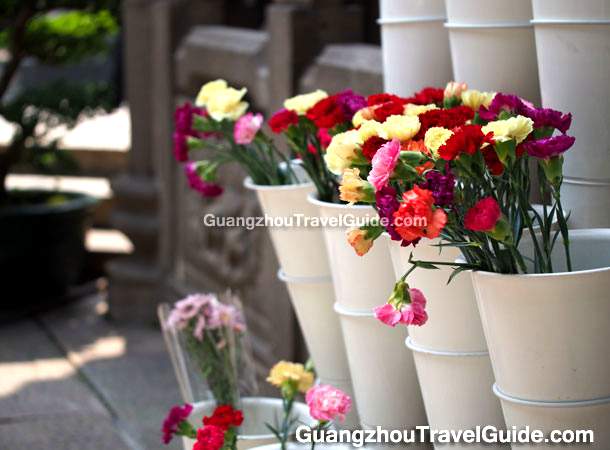Temple of Six Banyan Trees – Guangzhou’s Buddhist Jewel
Established in 537 AD
Why Visit?
As one of Guangzhou’s four most significant Buddhist temples , this 1,500-year-old sanctuary near Beijing Road pedestrian street houses Guangdong’s largest bronze Buddha statues. Perfect for combining with a shopping/historic tour !
The Flower Pagoda Landmark
- Original site of Su Shi’s (苏轼) famous poem
- Houses Guangdong’s heaviest bronze Buddhas (3 statues totaling 30 tons)
Smart Itinerary Tip
📍 From Guangzhou Beijing Road: 15-min pleasant walk (1km) through local neighborhoods
📍 From Gongyuanqian Metro: Exit B2 (Line 1/2), then 8-min walk

Architectural Highlights
The Flower Pagoda (Hua Ta) is currently closed for climbing (2024 update), but remains a stunning photo spot:
Best angles: Temple gates or northwest courtyard for tile details
Fun fact: Its “9 stories” are actually an optical illusion
Visitor Essentials
Hours: 8:00 AM – 5:00 PM (last entry 4:30 PM)
Admission: ¥10 (≈$1.50) – Cash only at small temples!
Photography: No flash near Buddha halls
Nearby Combo Trip
Guangzhou Beijing Road (15-min walk): Historic shopping street with:
2,000-year-old Tang Dynasty road ruins
Gongyuanqian Metro Area – Transfer hub to:
Chen Clan Ancestral Hall (Chen Clan Academy, Line 1, 3 stops,20 minutes walking from Temple of Six Banyan Trees)
Shamian Island (Line 6 transfer)
Guangxiao Temple is just 15-min walk (800m) from Six Banyan Trees Temple,
forming Guangzhou’s “Buddhist Heritage Triangle” with Hualin Temple.
But your Buddhist journey needn’t end here. A Legacy in Four Movements: Guangzhou’s Buddhist Quartet
Guangxiao Temple(233 AD)–Bodhidharma’s First Stop in China
Temple of Six Banyan Trees(537 AD)-– Su Shi’s poetic legacy & Flower Pagoda
Hualin Temple(526 AD)–500 gilded Arhats & Burmese jade Buddha
Haichuang Temple(917 AD)–Former Southern Han Dynasty Palace Site
Photo Gallery: A Visual Journey Through Temple of Six Banyan Trees Guangzhou





































